TE Connectivity Hand tools
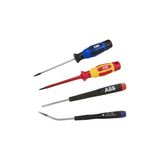
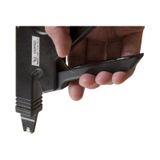



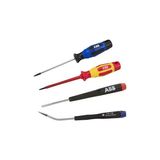


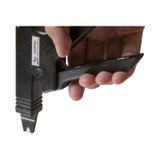

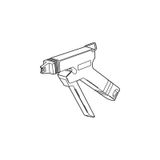
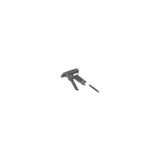
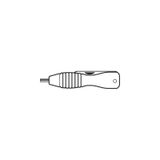
te connectivity hand tools for daily panel work
Precision matters when you repeat the same termination hundreds of times a day. The te connectivity hand tools range covers calibrated ratchet frames, interchangeable die sets, and ergonomic grips that reduce wrist load during long shifts. Handles sit close for controlled force at 1.5–2.5 mm², yet open wide enough for 6 mm² lugs. Most frames use steel pivots on bronze bushings to keep jaw parallelism tight after thousands of cycles. In control panels and lighting grids, crews standardise on te connectivity hand tools so pull-out values, strip lengths, and bellmouths look identical across every rail.
te connectivity crimping tools with verified pull-out
Reliable crimps start with matched barrels, ferrules, and dies. te connectivity crimping tools cover fine-strand copper from 0.14…6 mm² and selected power ranges up to 10 mm², with locator gates to hold contacts square. Ratchet locks only release at the correct compression, and colour-coded dies mirror ferrule sizes so ferrule inventory stays lean. Expect bellmouth and conductor brush at the proper ratio, plus four- or hex-profile options where vibration is a concern. Many shops record batch numbers from te connectivity crimping tools against QC pull tests, which keeps documentation tight when auditors ask for traceability.
te connectivity cable stripping tools for clean insulation removal
Jacket quality varies; blades must adapt. With te connectivity cable stripping tools, depth stops protect fine strands on 0.25…2.5 mm² leads, and rotary heads deal with tougher outer jackets on H05RN-F and PUR harnesses. Graduated strip gauges help maintain 4–6 mm lead-in for push-in terminals and longer tails for set-screw clamps. Spring returns speed repetitive work without nicking copper. Field teams carry spare cassettes for the same te connectivity cable stripping tools so blade changes do not shift strip length in the middle of a room bundle.
te connectivity cutting tools built for clean shears
Crushed ends complicate insertion. te connectivity cutting tools use induction-hardened jaws to shear multi-strand cable cleanly up to 6 mm² Cu without flaring. For tray work, compact heads fit between adjacent conductors and avoid disturbing neighbouring ties. A micro-bevel keeps force down while protecting edge life; flush cutters manage tie-off tails so nothing snags during panel door closure. Crews keep te connectivity cutting tools separate for copper and steel to preserve blade geometry and extend service intervals.
te connectivity wiring tools supporting assembly rhythm
From torque drivers to ferrule dispensers, te connectivity wiring tools keep the bench flowing. Adjustable torque handles cover 0.3–1.2 Nm for terminal screws so clamp force is repeatable; bit holders accept insulated tips for tight risers. Ferrule feeders align sleeves under the crimper nose and prevent misfeeds on 0.5 and 0.75 mm²—sizes you’ll crimp all day in lighting controllers. Label pens, tie guns with tension control, and continuity probes round out te connectivity wiring tools, cutting rework when cabinets churn during tenant changes.
te connectivity installation tools aligned to site realities
Site work is never a clean bench. te connectivity installation tools pack into low-profile cases with foam that holds frames, dies, and contact locators in one layer, so nothing goes missing on scaffolds. Cable prep kits pair strippers with spare cassettes, IPA wipes, and lint-free pads to keep adhesive sleeves honest. For ceiling zones, angled crimp heads reach over gear trays without removing luminaires. When the plan calls for pre-terminated harnesses, te connectivity installation tools travel to the prefabrication area and return to site only for final pulls and QC.
te connectivity connector tools for contact insertion and extraction
Hybrid connectors mix power and control; handling them requires the right picks and locators. te connectivity connector tools include keyed insertion tips that support the contact shoulder, preventing flare at the retention lance. Extraction blades slide alongside the terminal to release the tang without scratching plating, which preserves low contact resistance over time. For keyed shells, locator blocks keep orientation correct while crimping so seals seat properly on reassembly. Stock te connectivity connector tools by family and cavity size; crews avoid improvisation that would otherwise bend lances and waste housings.
Product notes for B2B engineers
- Crimp ranges and die profiles: use hex on vibration-prone machinery and four-indent on compact signal pins; both reach consistent pull-out when conductor class and ferrule wall thickness are matched.
- Strip windows: set 5 mm for push-in blocks, 7–8 mm for screw cages; longer tails for ring lugs to ensure full barrel fill.
- Cutting geometry: reserve flush cutters for nylon ties and fine electronics leads; cable shears with curved blades keep roundness on 4–6 mm² for snug gland entries.
- Torque control: document driver settings per terminal type; lock values in the panel worksheet so night shifts repeat the same clamp force.
Applications and integration across TE panels
Hand tools interface directly with TE ferrules, plug connectors, and terminal blocks, so pitch, strip window, and bellmouth targets line up. In hotels and offices, slim frames and push-in contact locators speed relay and I/O rows. Industrial corridors benefit from hex crimps and anti-vibration profiles; façade crews rely on angled heads that fit behind gear trays. Standardising on one ecosystem means replacement jaws, cassettes, and springs fit across multiple frames without downtime.
Advantages of working with Bankoflamps
We organise tooling around your installation sequence, not catalogue pages. Quotes with EAN and MPN for complete kits land in about an hour, and live EU stock lets you book crews only when cases are ready. The portal shows shipment status, lead times, and price files with validity windows you can plan against. Trusted clients work on post-payment terms up to 30 days. We consolidate partials so a single case arrives per team, and your account manager checks die ranges, strip cassettes, torque settings, and connector families against drawings—so the right te connectivity installation tools and consumables hit site, room-bundled, across France, the Baltics, Germany, Spain, Italy, Belgium, and the Netherlands.